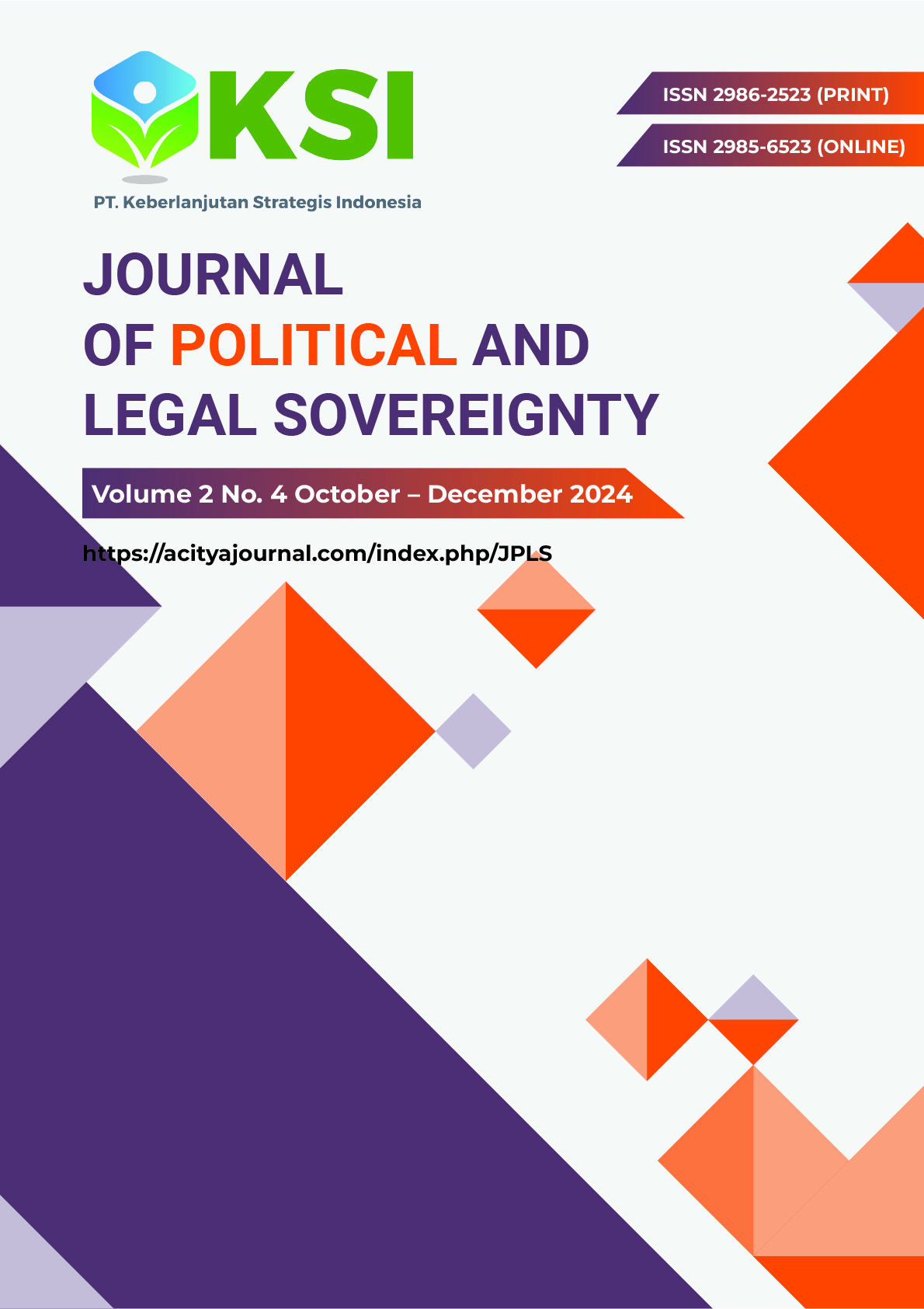The Role of Geopolitical Components in Afghanistan's National Power
DOI:
https://doi.org/10.38142/jpls.v2i4.261Keywords:
Geopolitical Components, Afghanistan, National Power, National UnityAbstract
Purpose:
This research investigates the intricate relationship between geopolitical factors and Afghanistan's national power, offering valuable insights into the nation's standing on the global stage. Our findings underscore the pivotal role of national unity, with 96% of respondents recognizing its significance. It reaffirms the historical resilience of the Afghan people in the face of external pressures and internal divisions.
Methodology:
Besides national unity, the study identifies several other influential geopolitical components, including leadership, Aryan culture, human resources, and geographical location. These components interweave with Afghanistan's historical, cultural, and geographic context, collectively shaping its national power. Notably, while historically significant, religion and natural resources were perceived as less influential, challenging conventional notions about their impact.
Findings:
The research also highlights the dynamic nature of Afghanistan's national power, with new geopolitical factors, such as "Aryan culture" and "quality of diplomacy," emerging as influential elements in the evolving geopolitical landscape.
Implication:
This research illuminates the complex tapestry of geopolitical factors that underpin Afghanistan's national power. National unity and an array of historical, cultural, and geographical factors form the foundation of the nation's strength. Understanding these dynamics is essential for comprehending Afghanistan's role in the global arena and shaping policies that enhance its stability and influence.
Downloads
References
Adams, S. (2011). Geopolitical Strategy and National Power: A Contemporary Assessment. International Journal of Strategy and Policy, 14(4), 421–439.
Felbab-Brown, V. (2019). Afghanistan's Resource Curse: The Pitfalls of Natural Resource Wealth. Brookings Institution.
Baldwin, D. A. (1985). Economic Statecraft. Princeton University Press.
Biddle, S. (2019). Afghanistan and the Future of Warfare: Implications for Army and Defense Policy. National Bureau of Asian Research.
Brzezinski, Z. (1997). The Grand Chessboard: American Primacy and Its Geostrategic Imperatives. Basic Books.
Clausewitz, C. V. (1984). On war. Princeton University Press.
Davis, S. (2017). Resource Scarcity, Geopolitics, and National Power: A Complex Interplay. Journal of Geopolitical Economics, 9(4), 98–115.
Flint, C. (2017). Introduction to Geopolitics. Taylor & Francis. https://doi.org/10.4324/9781315640044
Grau, L., & Jalali, A. A. (2013). The Other Side of the Mountain: Mujahideen Tactics in the Soviet-Afghan War. Naval Institute Press.
Hassmann, H. (2021). Geopolitics. Oxford Bibliographies.
Heywood, A. (2014). Global politics. Palgrave Macmillan. https://doi.org/10.1007/978-1-137-34927-9
Ikenberry, G. J. (2001). After Victory: Institutions, Strategic Restraint, and Rebuilding Order After Major Wars. Princeton University Press. https://doi.org/10.1515/9781400823963
Institute of Economic Affairs (IEA). (2020). Afghanistan's Minerals, Resource Curse or Blessing? [Online]. https://iea.org.af/en/afghanistan-minerals-resource-curse-or-blessing/
Jervis, R. (1989). The Logic of Images in International Relations. Princeton University Press.
Johnson, J. (2018). Geopolitical Alliances and National Power: An Examination of the 21st Century Landscape. Diplomacy and International Affairs, 6(1), 45–63.
Kindleberger, C. P. (1973). The World in Depression, 1929-1939. University of California Press.
Lewis, E. (2015). Geopolitical Conflicts and National Power: A Case Study Approach. Conflict Studies Journal, 21(2), 220–237.
Luttwak, E. N. (2015). The Rise of China vs. the Logic of Strategy. Harvard University Press.
Mackinder, H. J. (1904). The Geographical Pivot of History. The Geographical Journal, 23(4), 421–437. https://doi.org/10.2307/1775498
Maley, W. (2008). The Afghanistan Wars. Palgrave Macmillan. https://doi.org/10.1007/978-1-137-01361-3
Maley, W. (2017). Afghanistan: A cultural and Political History. Princeton University Press.
Mearsheimer, J. J. (2014). The Tragedy of Great Power Politics. WW Norton & Company.
Martinez, L. (2013). Cyber Geopolitics and National Power: Emerging Challenges. Cybersecurity Review, 15(1), 68–85.
Morgenthau, H. J. (2005). Politics Among Nations: The Struggle for Power and Peace. McGraw-Hill.
National Research Council. (2012). Making value for America: Manufacturing and innovation policies for the 21st century. National Academies Press.
Nye Jr, J. S. (2004). Soft power: The means to Success in World Politics. Public Affairs.
Rodriguez, M. (2019). The Geopolitical Chessboard: Understanding the Role of Geography in National Power. Geopolitical Studies Quarterly, 45(2), 175-193.
Rubin, B. R. (2019). Afghanistan from the Cold War through the War on Terror. Oxford University Press.
Ross, M. L. (2015). The oil curse: How Petroleum Wealth Shapes the Development of Nations. Princeton University Press.
Schetter, C. (2009). The Role of Natural Resources in the Conflict in Afghanistan. GIGA Working Papers, p. 87.
Smith, J. (2020). Geopolitical Factors and National Power: A Comprehensive Analysis. International Journal of Geopolitics, 12(3), 287–305.
Turner, M. (2014). Geopolitical Stability and National Power: A Longitudinal Study. International Affairs Research, 28(3), 334–351.
Waltz, K. N. (1979). Theory of International Politics. Waveland Press.
Kaplan, R. D. (2012). The Revenge of Geography: What the Map Tells Us About Coming Conflicts and the Battle Against Fate. Random House.
White, C. (2012). Geopolitical Ideologies and National Power: A Comparative Analysis. Journal of Global Politics, 8(2), 141–159.
Williams, R. (2016). Geopolitical Shifts and National Power: Lessons from History. Historical Geopolitics, 33(4), 589–607.
Zarif, M. J. (2021). The Doha Agreement. JOMUNIK. [Online]. http://jomunik.com/the-doha-agreement/
Downloads
Published
Issue
Section
License
Copyright (c) 2025 Ihsan Ullah IHSAN, Fayaz Gul Mazloum YAR

This work is licensed under a Creative Commons Attribution-NonCommercial 4.0 International License.
Creative Commons Attribution-NonCommercial 4.0 International License.


















